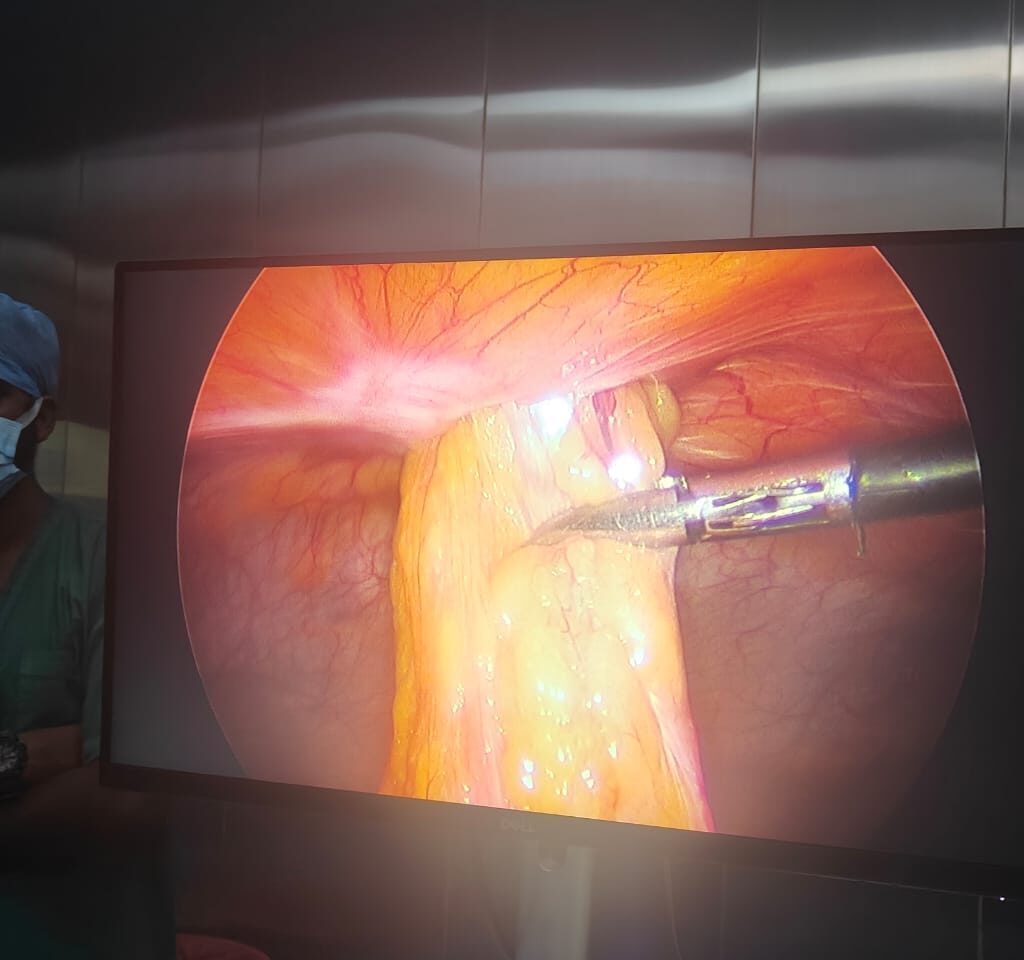Umbilical hernia with omental contents.
Umbilical hernias are common, yet many people don’t realize their potential risks. In some cases, fatty tissue from the abdomen, known as omental contents, can push through the abdominal wall. This type of hernia needs careful attention and often requires surgery.
A patient came to me with a noticeable bulge near the belly button. While the bulge wasn’t painful at first, it grew larger and caused mild discomfort. I performed an exam and ordered imaging to better understand the issue. It showed that the bulge was caused by omental tissue herniating through the abdominal wall. This situation can cause complications, such as the tissue becoming stuck or strangulated, which would require emergency surgery.

For this case, I chose laparoscopic surgery. It allows for smaller incisions, which means less scarring and a quicker recovery. Laparoscopy is also precise, which is important when dealing with delicate tissues. During the surgery, I carefully repositioned the omental tissue and returned it to the abdomen. To prevent the hernia from returning, I placed a mesh to reinforce the abdominal wall.
After the surgery, the patient followed a recovery plan. They avoided heavy lifting and focused on light activities, such as walking. Within a few days, the discomfort significantly decreased. By the end of the week, the patient returned to normal activities.
In conclusion, timely treatment is crucial for umbilical hernias with omental contents. With the right surgical approach, patients can recover quickly and avoid complications.
